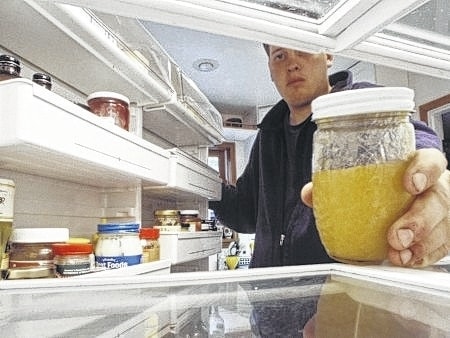
Question: I noticed that a friend of mine has a thermometer in her refrigerator. She says she uses it to make sure the refrigerator is cold enough. Why would this be necessary? Aren’t refrigerators built to keep food cold enough?
Answer: Well, yes, the whole idea of refrigerators is to keep food cold. But your refrigerator might not be cold enough.
It could be due to something as simple as opening the door more often than usual. Or it’s possible that the fridge is packed too tightly, not allowing cold air to circulate around the food properly. Your friend is on top of things by keeping a refrigerator thermometer and checking it regularly to make sure her food is being stored safely.
Refrigerators should be kept at a temperature above freezing (obviously) but below 40 degrees F. Above this temperature, some types of bacteria start to multiply rapidly, and they’re more likely to reach numbers that can cause foodborne illness.
Surprisingly, as many as 43 percent of home refrigerators have been found to be above 40 degrees, according to the Food and Drug Administration’s Center for Food Safety and Applied Nutrition. The only way to really know your fridge’s temperature is to use a thermometer. It’s important to check the temperature regularly and make adjustments to the refrigerator’s settings to keep foods at 40 degrees or below.
Some refrigerators have a built-in thermometer, but just in case it goes out of whack without you realizing it, it’s a good idea to have a good old-fashioned appliance thermometer so you can double-check occasionally.
For most of us, our refrigerator isn’t pristine. In fact, according to a 2013 study by NSF International, an independent public health auditing and certification organization, the refrigerator’s vegetable and meat compartments are the two germiest places in the home kitchen. The study found Salmonella, Listeria, yeast and mold in vegetable compartments, and yeast, mold, Salmonella and E. coli bacteria in meat compartments. It’s important to know that you should separate raw meat, poultry, seafood and eggs from other foods in your refrigerator. Use a bin to store raw meats.
Authorities differ on how often to clean refrigerator bins. Some say every month. Others say every four months. Think of it as a good spring cleaning followed by summer, fall and winter cleanings. Doing so isn’t difficult. Just empty and remove the bins from the refrigerator. Wash them with hot soapy water. Rinse out the bins thoroughly and dry with a clean towel or fresh paper towels. Wipe down refrigerator shelves. Wipe off jars and containers as you return them to the shelves. And don’t miss the bottom of the refrigerator, underneath the produce bins.
For detailed guidance about keeping foodborne illness at bay by keeping your refrigerator and the rest of your kitchen clean, see “A Clean Kitchen Required for Food Safety” by University of Minnesota Extension, online at www.extension.umn.edu/food/food-safety/sanitation.


